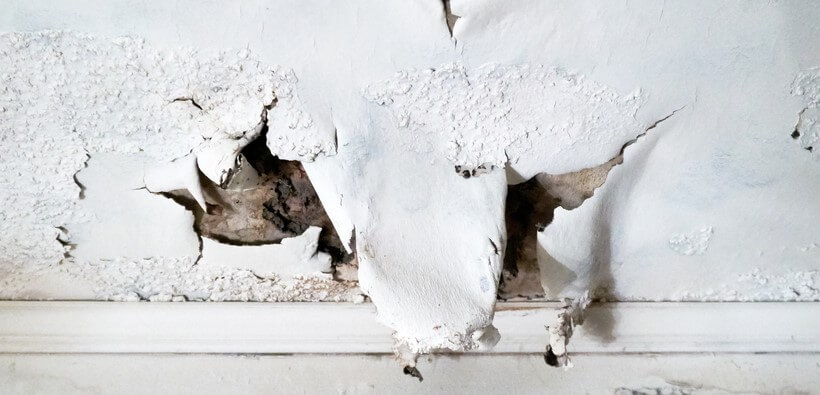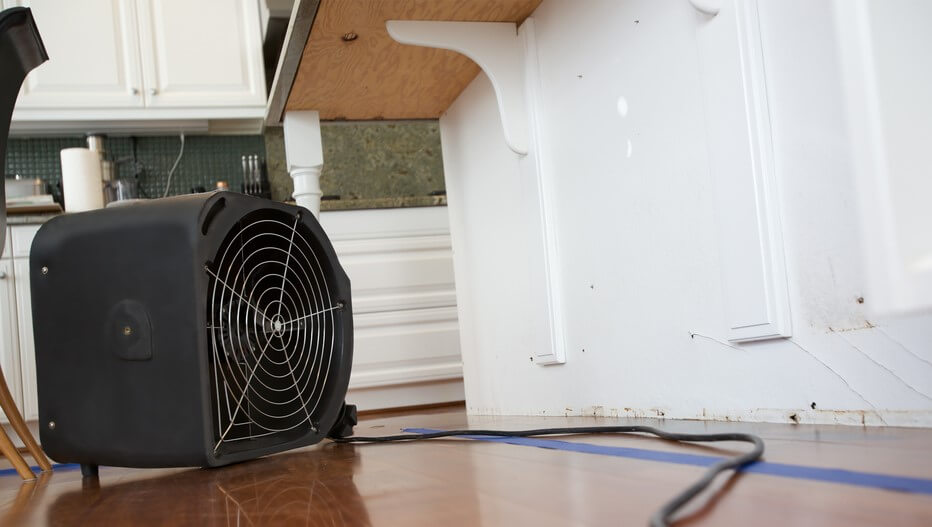Tips for Water Damage Repair

Do you suspect water damage in your home? This problem needs to be addressed as soon as possible to prevent further damage. If you see a small water spot on the ceiling or wall, it could grow over time. Plus, you can’t see problems like mold and water damaged wood behind the drywall. The quicker you make repairs, the better.
When you know what to look for and are aware of the potential causes, you can help prevent damage against future leaking or flooding. Below are tips for DIY water damage repair and how to know when to let the professionals handle the repairs.
What is Water Damage?
Water damage occurs when excess water collects in areas where it shouldn’t, and many factors can lead to excess water. Causes of water damage include:
- Natural disasters
- Weather-related problems
- Plumbing issues
- Leaking pipes
- HVAC problems
- Moisture building in basements, attics, and other spaces
- Faulty household appliances
Is Drywall Ruined if Wet?
Drywall needs to stay as moisture-free as possible to avoid rot and warping. Since it is not load-bearing, removing and installing new drywall will not threaten the integrity of your home. Drywall needs to be repaired or replaced ASAP to prevent additional damage from mold or mildew.
Determine the Damage
The first thing you should do when you suspect water damage in your home is to determine its extent. Test the ceiling or wall by poking it with your fingers. If the drywall feels spongy or soft, you probably have water damage.
You may notice a water bubble or softened, discolored areas on the wall or ceiling. Use a nail or other punch tool to create a drain hole for the water to escape and catch it with a bucket.
Dry Out the Area

It’s important to get rid of all the moisture ASAP before it causes more damage. Mold spores can develop quickly, and they can be extremely dangerous to your health. If you notice any black spots or discolored soft spots, or if the area is emitting a foul odor, contact a professional immediately. For smaller areas, use fans to circulate air. For bigger areas, consider renting a large-capacity dehumidifier.
Repair the Drywall
Repairing water-damaged drywall is not too difficult if you know what you’re doing. Cut out the wet drywall as soon as possible. Make sure to wear goggles or other eye protection as you remove the damaged drywall. After materials have been replaced, seal and caulk to help minimize any future water problems. You can match your paint or stain for touch-ups or apply a fresh coat.
When to Call a Professional
If you have significant, widespread water damage or don’t know how to fix a leaking ceiling, it’s probably best to let a professional handle the repairs. If there is suspected structural damage to beams or rafters, contact professionals to repair your water damaged wall or ceiling.
Water damage caused by events such as a burst pipe may be covered by insurance, so act fast. The quicker you notice a leak, the easier it will be to repair the water damage.
Did you know that InsureOne offers high-quality and affordable homewoners coverage? Get your free home insurance quote online, over the phone, or by visiting us today. We remain open and ready to meet all of your insurance needs.


